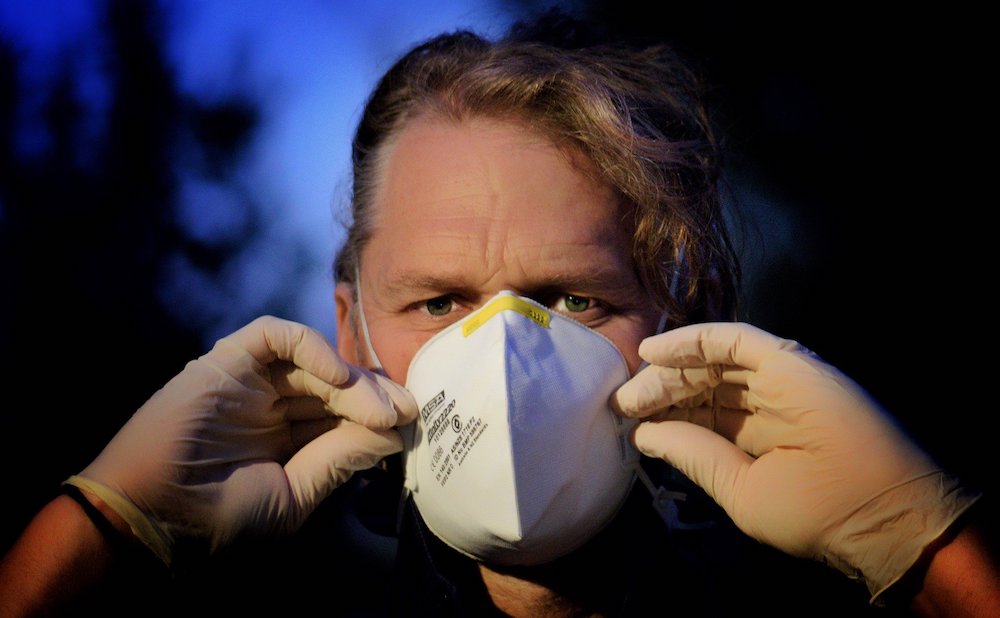Healthcare Simulation Industry Responds to Coronavirus COVID-19
What few predicted and many promised, has arrived. COVID-19 has spread across the globe and the nightmare of a modern day pandemic is still in the beginning of the second act. So connected to the absolutely crucial “just in time” training that is needed right now, the medical simulation industry has responded in masse to support its community and the global healthcare education and training community with the emergency resources they need to fight what is now the world’s greatest enemy.
For more details of the items on this list, please be sure to also read / share this and our previous Coronavirus Simulation articles:
-
- Additional Responses to the Coronavirus from the Medical Simulation Industry
- Healthcare Simulation Industry Responds to Coronavirus COVID-19
- Coronavirus Simulation Resources: Scenarios, Online Training, Procedures Guide
- HHS Whistleblower Complaint Demonstrates Immediate Need for Medical Simulation Coronavirus Training
- Suspected COVID-19 Simulation Scenario from CAE Healthcare, New WHO Resources & More
Do you have any additional resource to share, like a scenario file, research highlight, or success story? Email us right now so we can add it here!
Sponsored Content:
Education Management Solutions Releases Covid-19 Coronavirus Medical Education Guidelines
Education Management Solutions, LLC (EMS), a leader in medical simulation learning management technology, has released Covid-19 contingency ready workflows for healthcare education. Their flagship simulation education product, SIMULATIONiQ, natively supports telemedicine, a requirement urgently needed by many healthcare education programs. This HIPAA-ready telemedicine capability is supported by newly released guidelines on the best practices for utilizing SIMULATIONiQ telemedicine to support uninterrupted healthcare education and simulation training.
“A key challenge for our customers and other academic institutes is how can I follow the best practices outlined by the Centers for Disease Control, (CDC) to protect students, including social distancing practices, and also provide engaged and high quality medical education?” said Anurag Singh, President and CEO.
“We are focused on the health and safety of our customers and communities, and are so pleased that our product feature can help keep education programs moving forward with high quality, engaged, live and interactive simulation learning.” Learn more here.
Sponsored Content:
CAE Healthcare COVID-19 Resources
In response to the current global pandemic of a 2019 novel coronavirus (COVID-19) and the potential for increased global spread, CAE Healthcare helping with a complimentary webinar, SCE, and outreach toolkit to assist educators. These items have been authored by the CAE Healthcare Academy and CAE Healthcare’s Chief Medical Officer. Download them all here!
CAE Webinar: “COVID-19: Hospital Preparedness for Managing Coronavirus” will focus on:
- Infection control practices (ICP)
- Proper identification of coronavirus
- Implementation of proper personal protective equipment (PPE)
- Conducting safe patient triage and containment
- Addressing complications
CAE Healthcare SCE: “Suspected COVID-19” will focus on the following synopsis:
- Baseline Patient Presentation
- Triage and Patient Assessment
- Implementation of Safety Protocols (Donning of PPE, Hygiene Implementation, Cross Contamination Prevention, etc)
- Progressive Symptom Management and Patient Care
- After Care Actions (Patient Isolation, Public Health Notification, etc)
- Proper Doffing of PPE and Waste Disposal Management
CAE Outreach Toolkit: CAE Healthcare wants you to have the tools to reach out into your communities as fast as possible with COVID-19 training and simulations. Soon, they will also provide a series of customizable marketing materials that include:
- Tools for displaying signage
- Tools to add information to your website
- Tools for social media outreach
- Tools to send an email
- Tools to leave with decision makers
Download all of these CAE Healthcare Coronavirus Tools Here!
COVID-19 Airway Management Tools From “Life in the Fastlane”: Better Care Through Clinical Simulation
Here Dr. Chris Nickson FANZCA, FHKCA, FHKAM (Anaesthesiology) Department of Anaesthesia and Intensive Care, Prince of Wales Hospital, Chinese University of Hong Kong and Clinical Simulation Committee, Hong Kong College of Anaesthesiologists, shared some key research highlights, core requirements and prebriefing, simulation scenario and debriefing rubic guides, along with this absolutely amazing COVID-19 Airway Management infographic from Albert Chan, Department of Anaesthesia and Intensive Care, Prince of Wales Hospital, Chinese University of Hong Kong. Check out the complete Life in the Fastline article here.
Goals of Simulation in Healthcare:
- Build staff preparedness for managing suspected or confirmed cases of Covid-19 with “just-in-time training” (Van Merriënboer & Kirschner, 2017) in a timely manner (short lead time for preparation)
- Engage in process testing based on systems integration principles and refine infection control protocols and workflows (Dubé et al., 2019; Reid, Stone, Huang, & S. Deutsch, 2016)
Practical issues and tips:
- Psychological safety is very important, especially in this setting, as participants may be very anxious and overwhelmed by infection risks, as well as the protocols and guidelines. Make efforts to orient learners and establish a safe container (Rudolph, Raemer, & Simon, 2014).
- Do develop a script for prebriefing (sample is provided in links) to orientate learners, establish safe container and decrease cognitive load of facilitators
- Using AIIR enhances fidelity and authenticity, and allows systems testing. However, AIIR may need to be used for clinical purposes, balance between training needs and clinical service must be kept, and plan for contingencies.
- Consumption of PPE is a genuine concern in current epidemic, yet practicing gown up and gown down are essential for staff safety (Lau et al., 2004). Do make efforts to conserve PPE for simulation training.
- Institutional support and stakeholder engagement are vital to success of program, because of the resource and time put into building staff capacity in a short time. Feedback your findings from systems testing to further enhance workflow and processes
- Develop learning objectives based on your institutional needs
The President’s of the Society for Simulation in Healthcare, the International Nursing Association for Clinical Simulation and Learning, and the Association for Standardized Patient Educators made a joint statement last week about the Coronavirus Situation:
“The current viral outbreak is but one example of the challenges associated with global and public health. Governments around the world, as well as global organizations like the World Health Organization, are monitoring the ‘SARS-VoV-2’ virus and the disease it causes, nicknamed “coronavirus disease 2019” or “COVID-19.” This outbreak has governments, healthcare providers, and the public interested in ways to prevent and prepare for infection, treat the infected, and understand how a virus spreads throughout the world.
Other outbreaks, including Ebola, Dengue Fever, Yellow Fever, Zika, Cholera, Chikungunya, and Severe Acute Respiratory Syndrome (SARS), have posed severe health threats across the globe – all within the recent past. Preparation for dealing with future outbreaks is as important today as it has ever been. Noteworthy, models and simulations are valuable tools in the prevention, treatment, and understanding of viral outbreaks and health crises, in general. Models and simulations can help in preparation for and during an outbreak.
Our organizations strongly encourage new and continued public and private investment in efforts to develop foundational models and simulations that can assist healthcare professionals and government leaders to better prepare for large-scale health crises. Our collective practitioner, academic, and industry members possess a wealth of experience creating compelling, effective training and education tools and applying these tools successfully; we welcome collaboration and partnership with the greater community of professionals seeking to minimize the impact of large-scale health crises.”
Please Subscribe to Stay Informed!
Lance Baily, BA, EMT-B, is the Founder & CEO of HealthySimulation.com, which he started while serving as the Director of the Nevada System of Higher Education’s Clinical Simulation Center of Las Vegas back in 2010. Lance is also the Founder and acting Advisor to the Board of SimGHOSTS.org, the world’s only non-profit organization dedicated to supporting professionals operating healthcare simulation technologies. His co-edited Book: “Comprehensive Healthcare Simulation: Operations, Technology, and Innovative Practice” is cited as a key source for professional certification in the industry. Lance’s background also includes serving as a Simulation Technology Specialist for the LA Community College District, EMS fire fighting, Hollywood movie production, rescue diving, and global travel. He and his wife Abigail Baily, PhD live in Las Vegas, Nevada with their two amazing daughters.
Sponsored Content:





















